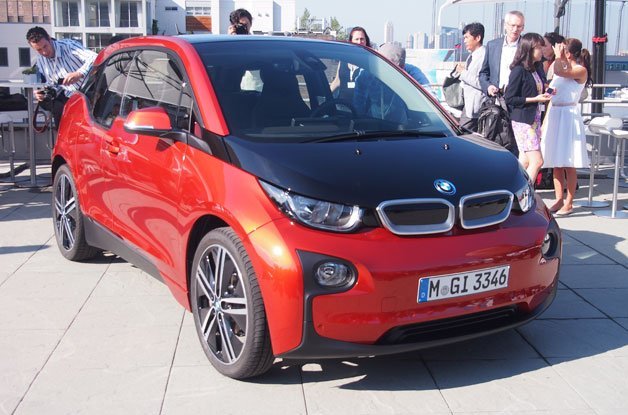The BMW i3 is chock-full of new technology afforded by its design as an EV from the start of development, which has resulted in a vehicle layout unique to the i3. BMW has named it LifeDrive architecture, and it features the Life Module and the Drive Module. The Life Module is the i3's pillar-less passenger cell, which is the first mass-produced monocoque made of carbon fiber reinforced plastic (CFRP). The tougher-than-steel material is also 30-percent lighter than aluminum, which contributes to the i3's relatively light weight of 2,700 pounds (preliminary US figure) and, in turn, increases its energy efficiency. Expect more of this technology to find its way into future BMWs.
The Drive Module, a 100-percent aluminum chassis mounted under the Life Module, houses everything that makes the i3 go. It includes the 22-kilowatt, 450-pound lithium ion battery mounted as centrally as possible, and provides power to a rear-mounted electric motor that turns the rear wheels. With 170 horsepower and 184 pound-feet of torque from zero rpm, the single-gear i3 can accelerate from 0-50 km per hour in 3.5 seconds and 0-100 km/h in about 7.0 seconds, but it has a top speed of only 150 km/h. BMW says the i3 has a real-world EV range of 128-170 km, and the standard charger can fill the battery in three hours. Opt for the SAE DC Combo Fast Charger and 30 minutes is all it takes for a full charge; 20 minutes will bump the battery to 80 percent. For customers who have range anxiety, BMW gives them the option to install a 34-hp, 650cc two-cylinder generator as a range extender for the electric drive system.
Nouvelles connexes



